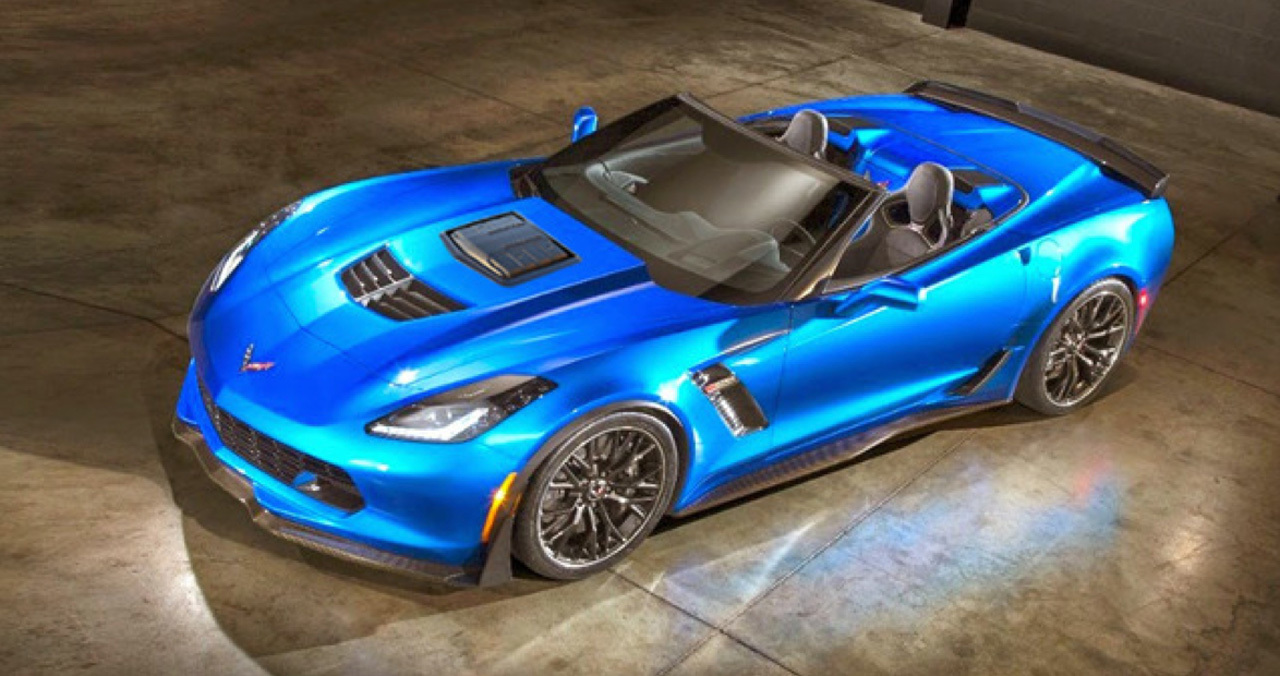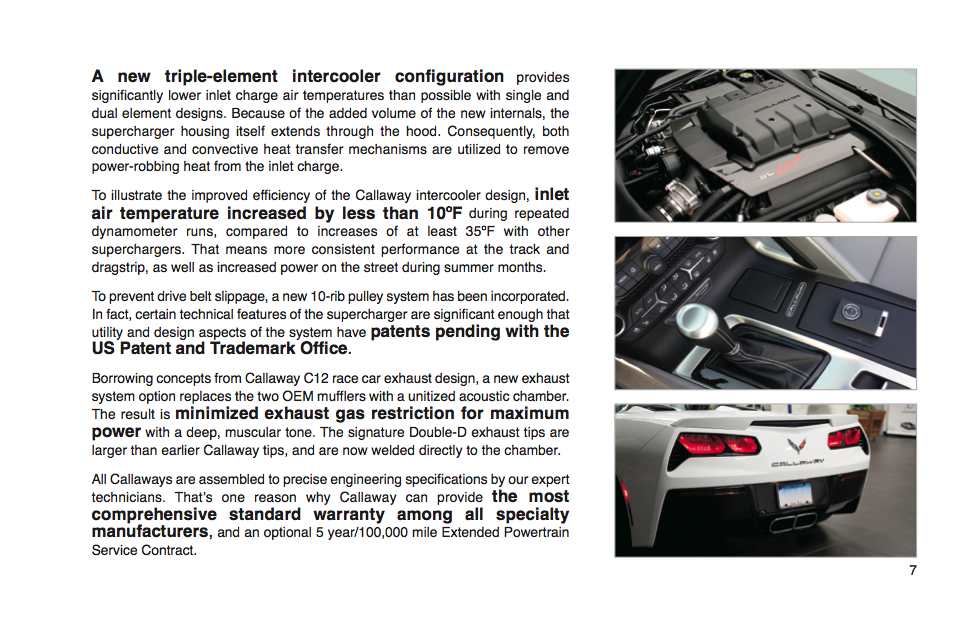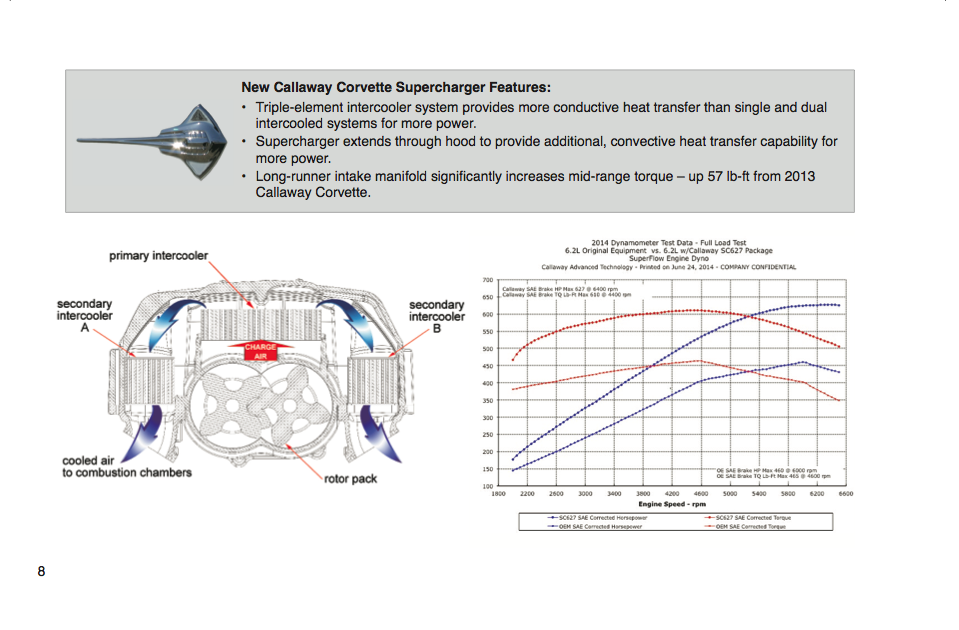Here’s Why the Callaway Corvette Z06 Won’t Overheat

The new Z06 is an amazing performance monster, but while it may have been designed in conjunction with the C7.R racer, it is far from an endurance machine. It has become pretty apparent that with all the newfound power in the Z06, the cooling system has a hard time keeping up on warmer days. Heat soak is a serious issue, and once temps rise above 80 degrees, you will notice a huge power drop after just a few laps. Callaway says that their new package for the Z06 fixes those issues, and they have the data to back it up.
Let’s start with the actual supercharger on top of this motor. When Callaway got started on this project, they threw out the standard Eaton TVS 1.7L unit in favor of a larger one that is their own proprietary design … a design that has so many different parts and pieces, they actually filed patents for the thing. This new supercharger uses a triple-intercooler design. There is a large primary intercooler in the center with a smaller extra cooler for each side before the air hits the combustion chamber. Cooler air going into the engine means cooler temps overall. Three intercoolers also reduces the risk of heat soak. Callaway says that on multiple dyno runs, the inlet air temperature only rose 10 degrees with this new design, versus temperature spikes of as much as 35 degrees on traditional units.

But what else has Callaway done? The car still has the same radiator, water pump and cooling capacity, so in theory, this one small change shouldn’t do much to kill the overheating issues. Well, this is where details matter, and subtle details make big changes. When Callaway went with a bigger supercharger, they had to hack a hole in the hood to make room for it. They left the hole open, and that has lots of extra cooling effects. First, there is extra cooling across the supercharger as a result of air moving directly over the top of the unit. Secondly, there is an entire airflow change through the engine bay thanks to the gaps left around the supercharger.
In a normal car, very little air actually makes it through the radiator, even at extremely high speeds. Air flows into the engine bay and gets stuck there, creating a pressure area. That pressure area makes it hard for more air to flow, thus causing cooling issues. When you cut a hole in the hood, you create a negative pressure space that allows the air inside the engine bay to escape, which allows more air to enter from the front. That means increased flow across the radiator, resulting in better cooling. It is essentially the same thing as cutting holes in your hood for standard louvered vents.

Think of it like shotgunning a beer. With that extra vent hole on the other side of the can, the beer flows quickly and smoothly. Air works the same way. This is how Callaway can promise to take care of your cooling issues without upping the size of the radiator or the flow of the water pump. It’s science!
Now obviously this is all just simple science on my part coupled with data from Callaway, but we should see real-world data soon enough as there are already several orders in for the Callaway Z06s. We will start digging for results as soon as we can find someone with one of these cool machines.
